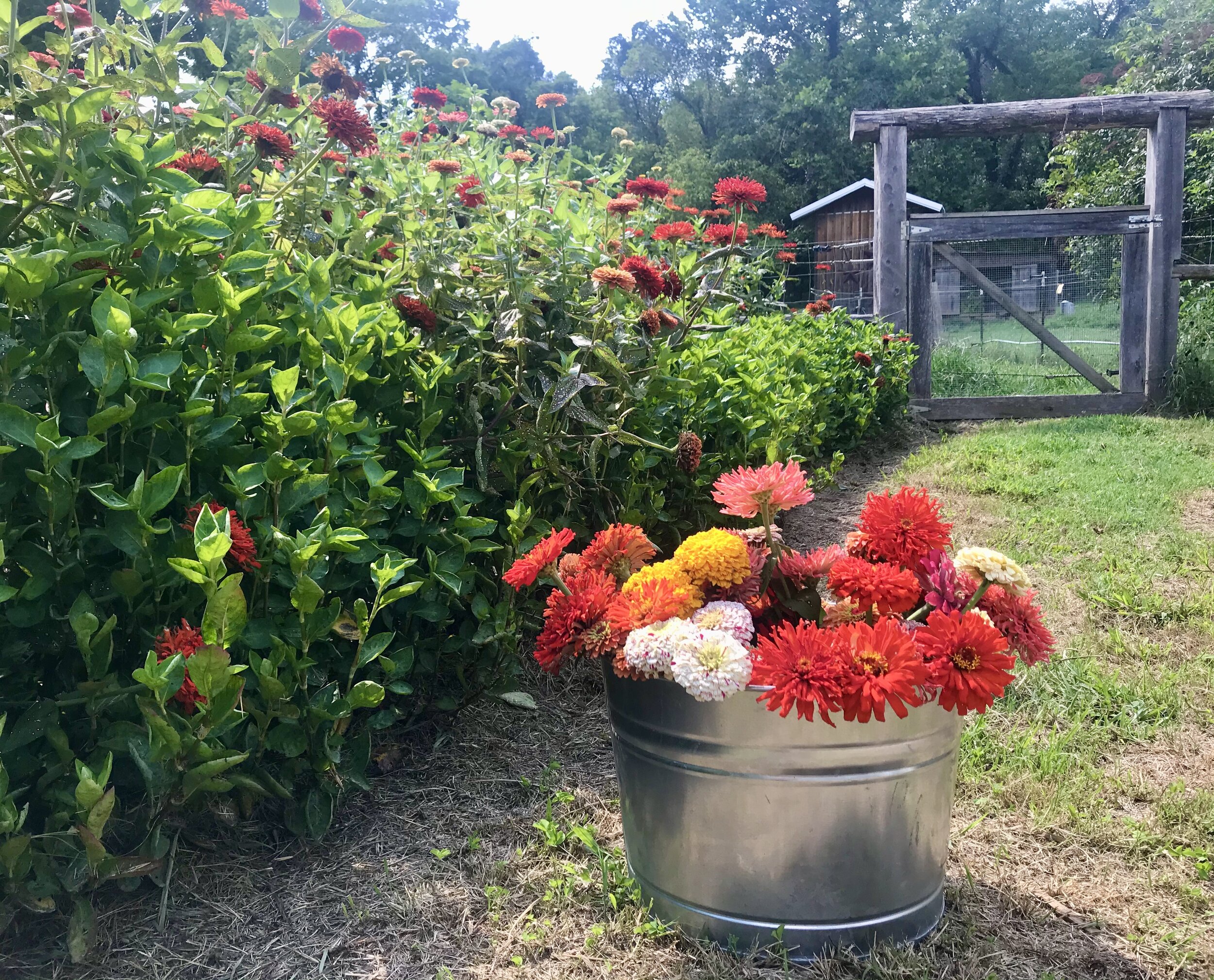
our history and future
at the intersection of
art and agriculture
Founders Donna Musarra and David Mervis
My husband, David, and I bought 174 acres of wilderness in the Rush Historic District of the Buffalo National River in 2000. We were looking for a place we could escape the heat of New Orleans, reconnect with nature, and recharge our batteries. We assumed at some point we would live in Arkansas part-time in the summer, garden for fun, and spend the long hot afternoons cooling off in the river and creeks. In the first couple of years, we camped on the property, explored the area, and spent long evenings by the campfire dreaming about the possibilities of such a beautiful and isolated place.
In 2005, our lives took a detour. Hurricane Katrina destroyed much of New Orleans, and deposited six feet of water in our house. Environmental issues had always been important to us, but soon became part of our long-term vision, and we thanked our lucky stars we had some land on higher ground. We moved to Fayetteville, AR to work and spent weekends developing the land in Rush that we affectionately named Lucky Star Farm.
David has always had his hands in the soil. His degree is in Environmental Studies, and even though he earns a living as
a financial adviser, his heart belongs in the dirt. He wanted a big organic garden, food security, and humanely grown
livestock. I just wanted it to look good. My background is in art, and I earned my living as a graphic designer and design instructor at Loyola University. Together, we wanted to make sure that we were good stewards of the land. While we
had both spent some time living in the country and gardening, neither of us had ever lived on a farm. We had a steep learning curve ahead of us.
We planted orchards, put up fences, cleared trails, and built garden sheds and a small cabin. Soon after came our living space and a workshop. The garden kept growing and growing. When the opportunity of high speed internet on the property became available, we moved in full time. The garden grew some more. We built a barn and a chicken coop, and the animals came (sometimes more than two by two). When we finally stopped to look around, we had a farm!
As part of the on-going development of Lucky Star Farm, we had many visitors—writers, musicians, artists, environmental activists, and curious friends who never thought Arkansas would be a destination for them. When they came, they understood. We also became part of a worldwide educational exchange program connecting organic farmers with people interested in ecological farming practices, commonly known as WWOOFERS (World Wide Opportunities on Organic Farms). We built a guest house and hosted people from all over the country. It was interesting to see the effect the farm had on our visitors. Nature has a way of soothing body, mind, and soul, and eating healthy seasonal produce creates a connection with food that many people have lost. We also noticed the opportunity it allowed for creative thought and connection to the culture of the site. We were creating a locale where food, the arts, and the environment intersected, and we wanted to share it.
After lots of research, workshops, and networking, in 2019 we created The Lucky Star Farm Artists in Residency Program. The residency allows artists, musicians, writers, designers, chefs, and scholars to spend time living and creating within our community while being nourished by the farm’s food systems and the natural environs of the Ozark Mountains.
We also encourage our artists to explore and interact with the local community. The area is filled with talented people skilled in many aspects of the arts and extremely knowledgeable of our unique landscape and culture. As the writer and farmer, Wendell Berry, says, “the culture is the way a community remembers or forgets how to live in its habitat.”
Where we go from here is continually evolving. In the planning stage is the construction of a new building that can accommodate additional artists. Artists are powerful environmental influencers and the work they create can help visualize and prototype what a sustainable future could look and feel like. Our goal is to connect the artists to the economic life of both the land and the community, and integrate the artist and their work into the natural environment.


